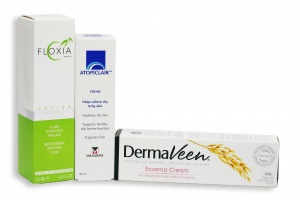|
Water and Oil Balance 2- Epidermis
 2014-02-07
Many layers of squamous cells constitute the epidermis. The epidermis consists of transitionally active layers, with the most active cells lining its base. The whole epidermal layer determines the smoothness and integrity of the corny layer. Therefore, in pathological skin, such as eczema and psoriasis, we cannot possess a pliant corny layer unless we manage to preserve a healthy epidermal layer. Many skin diseases are indeed caused by epidermal defects. Besides squamous epidermal cells, there exists immune cells called the Langerhans cells, as well as pigment cells called melanocytes. Langerhans cells are the major components that contribute to the immune-reactivity of the epidermal layer. Protecting our epidermis is thus known to be essential in maintaining high skin quality. Water ions and electrolytes are in fact very important in supporting the integrity of squamous cells; on a molecular level, lipids assist diffusion of nutrients prior to the electrolytes-assisted transportation of nutrients throughout our skin layers. Some creams and lotions can only stay on the surface while others consist of contents that can reach deeper layers of our epidermis, penetration depth results in functional difference of these products. Some of them form effective delivering systems for nutrients delivery. Despite nutrients delivery being exclusive to creams from a higher price range, most of the moisturizers sold in the cosmetic field can form a modifiable shield to protect our natural skin barrier. However, it is still considered to be best if they do not alter our sebum secretion too much. Ideally, they should be able to buffer seasonal assault by ensuring that the water and oil balance of our skin is effectively sustained throughout the year. If not, serum will be needed to protect the epidermal layer by altering the physiology of the epidermis and deeper layers. |
|


